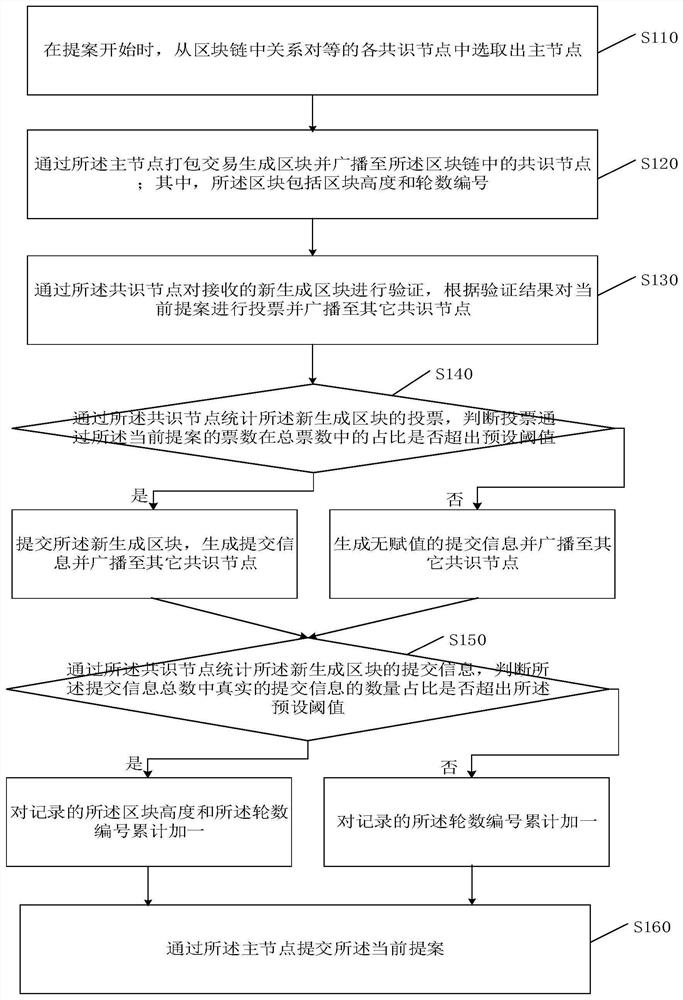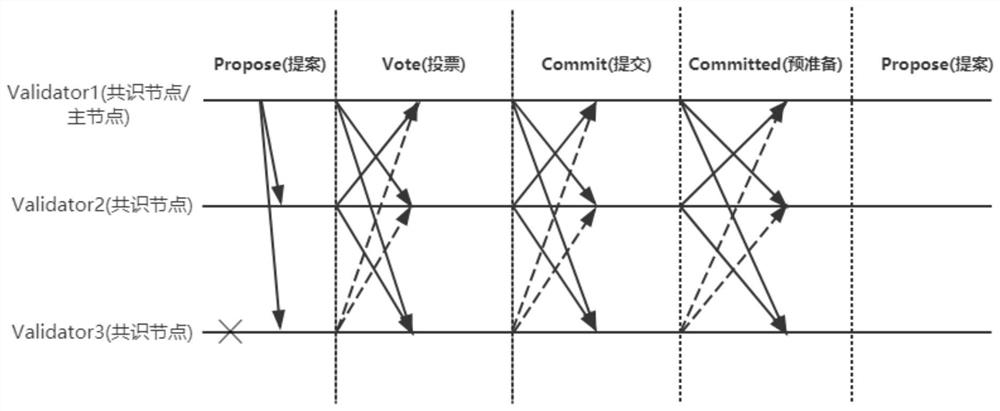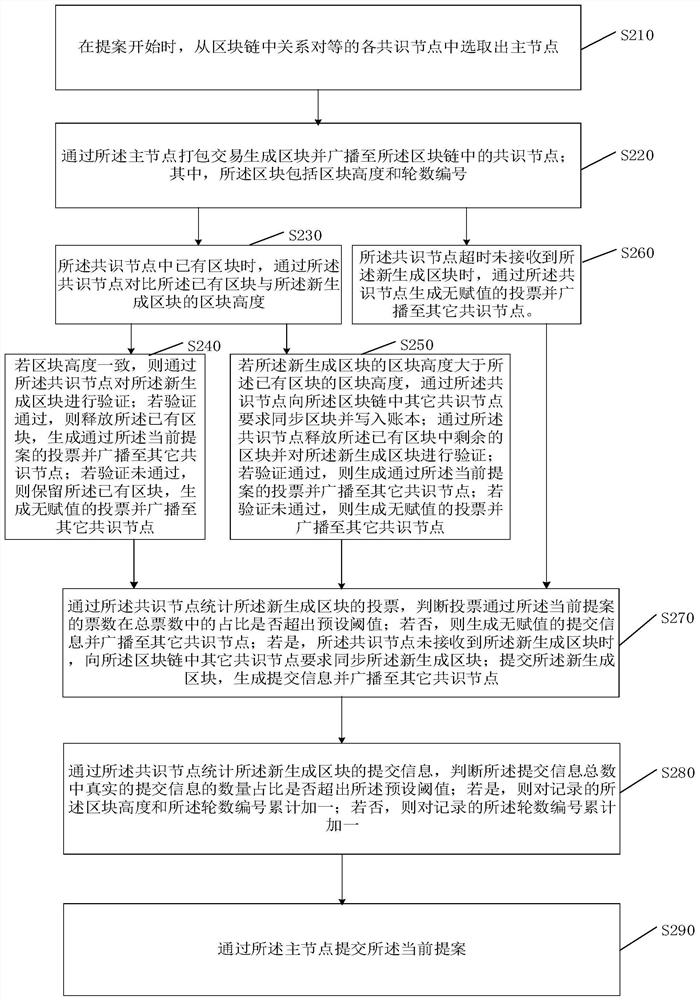Byzantine fault-tolerant consensus method and system
A Byzantine and consensus technology, applied in the field of Byzantine fault-tolerant consensus methods and systems, it can solve the problems of node availability that cannot be agreed upon by node status.
- Summary
- Abstract
- Description
- Claims
- Application Information
AI Technical Summary
Problems solved by technology
Method used
Image
Examples
Embodiment 1
[0053] Such as figure 1 As shown, it is a schematic flowchart of the Byzantine fault-tolerant consensus method provided by Embodiment 1 of the present invention. This embodiment is applicable to the consensus mechanism of the alliance block chain, and the nodes in the alliance block chain are peer-to-peer and exist in a distributed P2P network. This method can be executed by each consensus node server connected to each other in the alliance block chain. In the embodiment of the present invention, the server is used as the execution subject for illustration. The method specifically includes the following steps:
[0054] S110. At the beginning of the proposal, select a master node from all consensus nodes in the blockchain that are in an equal relationship.
[0055] When each consensus node in the alliance blockchain starts a new round of consensus process, it enters the proposal state, and a master node (proposer) needs to be selected from each consensus node (Validator node) ...
Embodiment 2
[0079] Such as image 3 As shown, it is a schematic flowchart of the Byzantine fault-tolerant consensus method provided by Embodiment 2 of the present invention. On the basis of Embodiment 1, this embodiment also provides a process for synchronizing consensus node blocks and releasing blocks during the consensus process, so as to solve the problem of node availability.
[0080] S210. At the beginning of the proposal, select the master node from the consensus nodes in the blockchain that are peer-to-peer;
[0081] S220, generate a block through the master node packaging transaction and broadcast it to the consensus node in the blockchain; wherein, the block includes a block height and a round number;
[0082] S230. When there is an existing block in the consensus node, compare the block heights of the existing block and the newly generated block through the consensus node.
[0083] After the master node broadcasts the newly generated block to other consensus nodes in the alli...
Embodiment 3
[0102] Figure 4 It is a schematic structural diagram of the server provided by Embodiment 3 of the present invention. On the basis of Embodiment 1 or Embodiment 2, the embodiment of the present invention also provides a server 4 . At the beginning of the proposal, after the master node is selected from the peer-to-peer consensus nodes in the blockchain, the server includes:
[0103] The block generation module 401 is used to use the master node to package transactions to generate blocks and broadcast them to consensus nodes in the block chain; wherein, the blocks include block height and round numbers;
[0104] The consensus node voting module 402 is used to verify the newly generated block received by the consensus node, vote on the current proposal according to the verification result and broadcast it to other consensus nodes;
[0105] In an implementation example, the consensus node voting module 402 verifying the received newly generated block through the consensus node...
PUM
 Login to View More
Login to View More Abstract
Description
Claims
Application Information
 Login to View More
Login to View More - R&D
- Intellectual Property
- Life Sciences
- Materials
- Tech Scout
- Unparalleled Data Quality
- Higher Quality Content
- 60% Fewer Hallucinations
Browse by: Latest US Patents, China's latest patents, Technical Efficacy Thesaurus, Application Domain, Technology Topic, Popular Technical Reports.
© 2025 PatSnap. All rights reserved.Legal|Privacy policy|Modern Slavery Act Transparency Statement|Sitemap|About US| Contact US: help@patsnap.com



